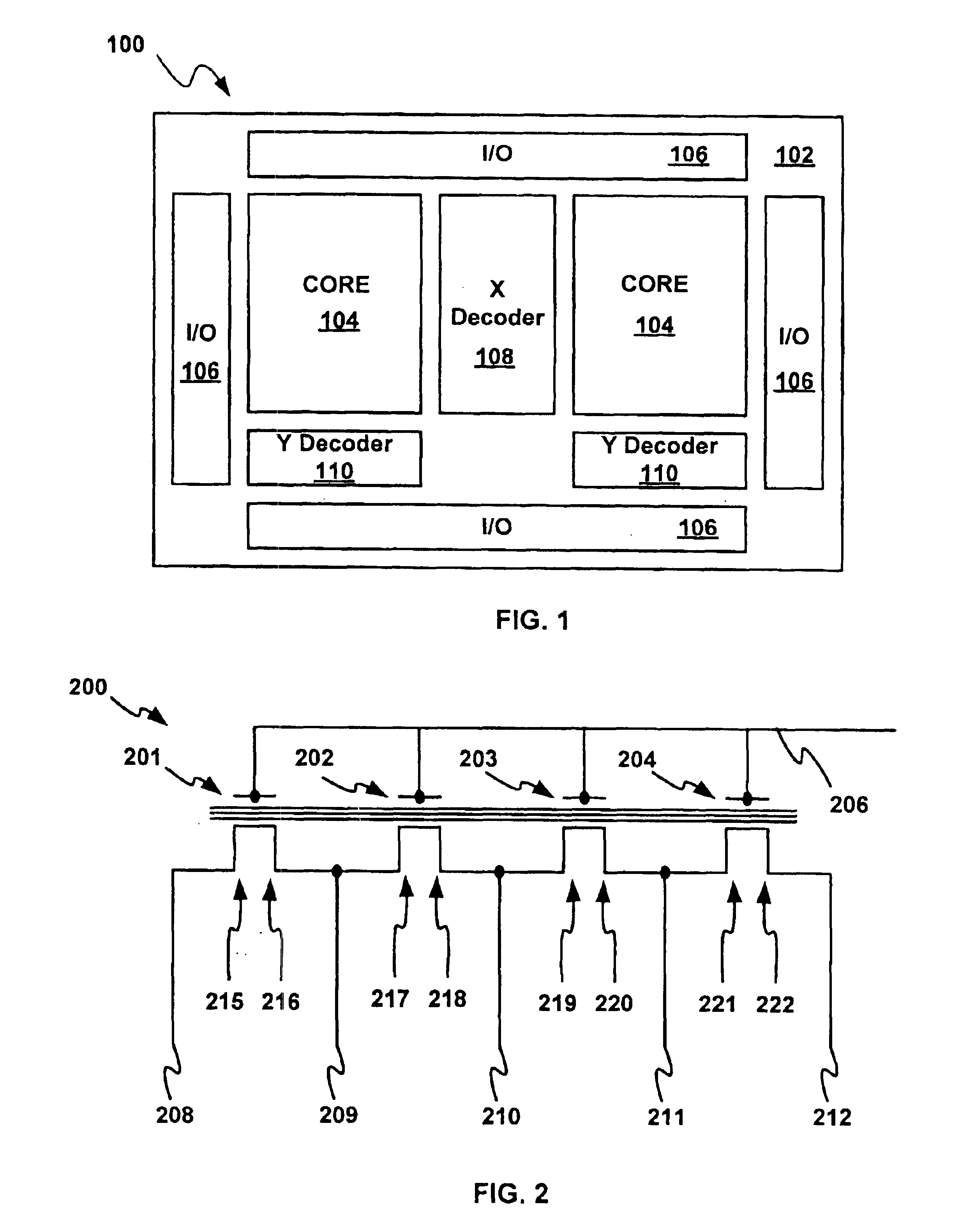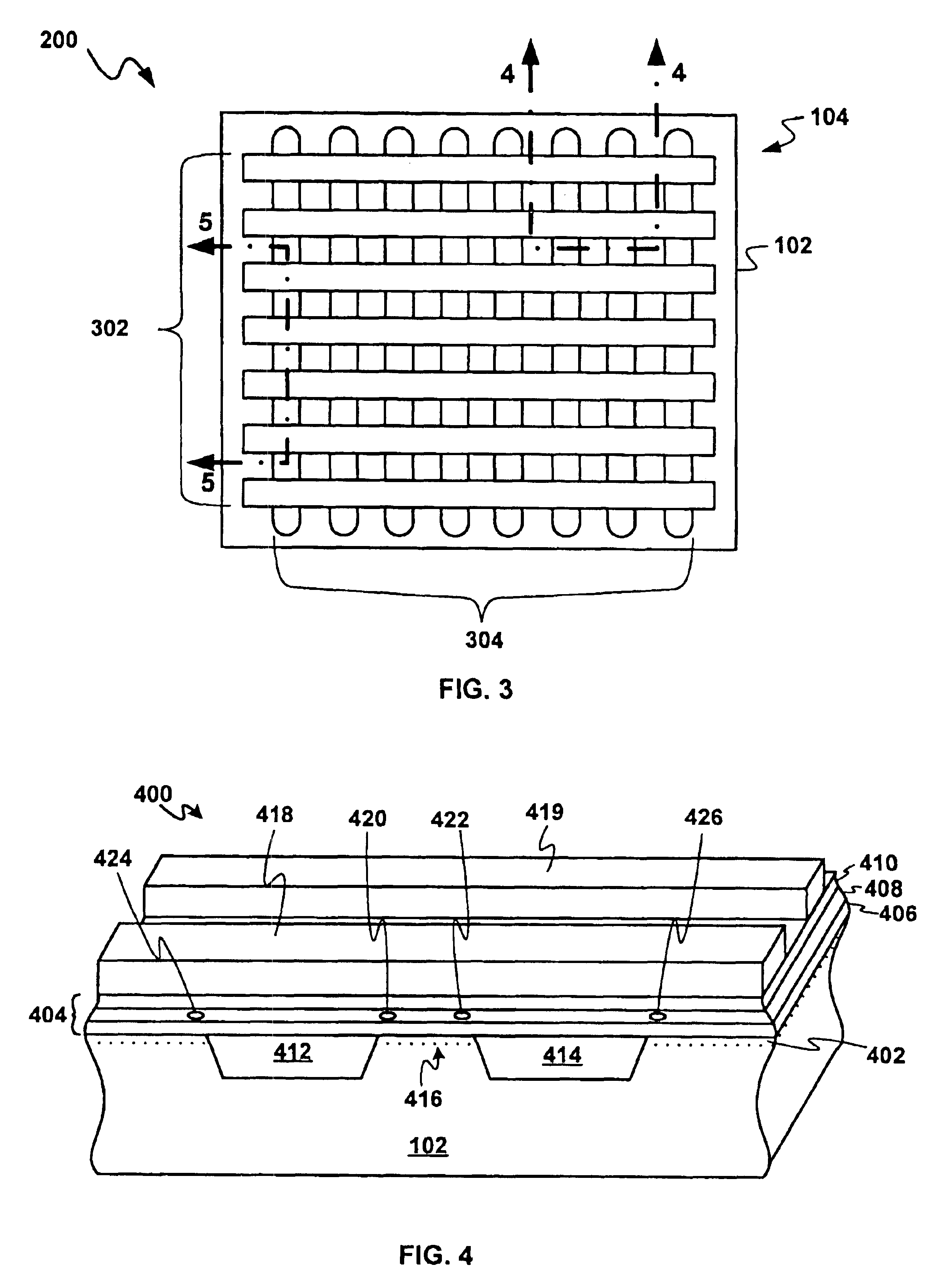Method of manufacturing a semiconductor memory with deuterated materials
a semiconductor memory and deuterated material technology, applied in the direction of semiconductor devices, electrical devices, transistors, etc., can solve the problems of reduced data storage density, reduced speed, and higher cost, and reduce the reliability of data, so as to improve data retention and reduce charge loss
- Summary
- Abstract
- Description
- Claims
- Application Information
AI Technical Summary
Benefits of technology
Problems solved by technology
Method used
Image
Examples
Embodiment Construction
[0023]Referring now to FIG. 1, therein is shown a plan view of a. MirrorBit® Flash EEPROM 100, which commonly includes a semiconductor substrate 102 in which one or more high-density core regions and one or more low-density peripheral portions are formed. High-density core regions typically include one or more M×N array cores 104 of individually addressable, substantially identical MirrorBit Flash memory cells. Low-density peripheral portions typically include input / output (I / O) circuitry and programming circuitry for selectively addressing the individual memory cells. The programming circuitry is represented in part by and includes one or more x-decoders 108 and y-decoders 110, cooperating with I / O circuitry 106 for connecting the source, gate, and drain of selected addressed memory cells to predetermined voltages or impedances to effect designated operations on the memory cell, e.g., programming, reading, and erasing, and deriving necessary voltages to effect such operations.
[0024...
PUM
 Login to View More
Login to View More Abstract
Description
Claims
Application Information
 Login to View More
Login to View More - R&D
- Intellectual Property
- Life Sciences
- Materials
- Tech Scout
- Unparalleled Data Quality
- Higher Quality Content
- 60% Fewer Hallucinations
Browse by: Latest US Patents, China's latest patents, Technical Efficacy Thesaurus, Application Domain, Technology Topic, Popular Technical Reports.
© 2025 PatSnap. All rights reserved.Legal|Privacy policy|Modern Slavery Act Transparency Statement|Sitemap|About US| Contact US: help@patsnap.com



